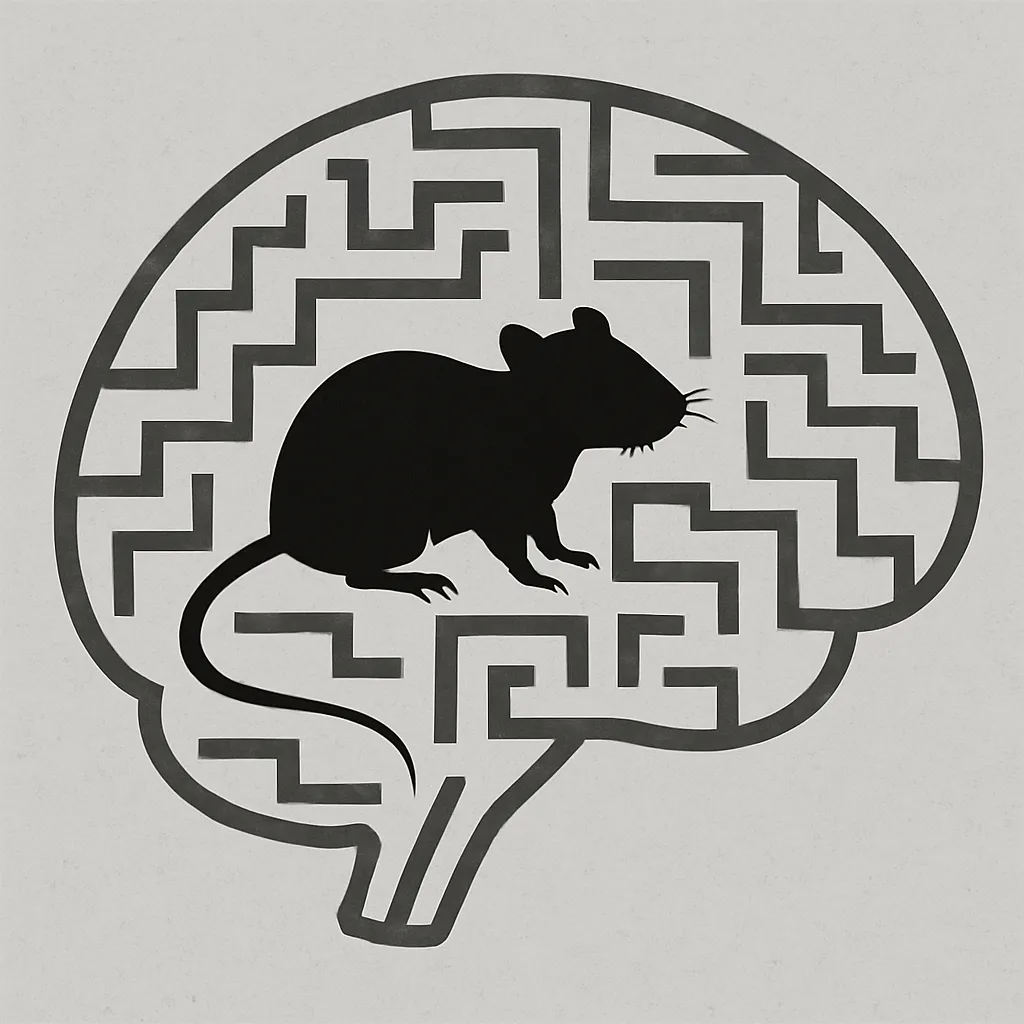Restoring Brain Function? A Cure for Autistic Rats, or Just Another Attack on Autistic Humanity?

There are scientific studies that ask questions. And then there are studies that answer questions no one should be asking.
A new study titled "Restoring Brain Function in Autism: GSK3β Inhibition by 6-Bromoindirubin-3′-oxime Reverses Valproic Acid–induced Neuropathology" was recently published in ACS Chemical Neuroscience. It proudly proclaims that it has “restored brain function in autism” — by injecting rats with a molecule (6-BIO) that tamps down on a signaling enzyme in the brain (GSK3β). The rats in question had been exposed to valproic acid (VPA) in utero, a controversial method used to model “autism-like” behaviors in animals. According to the authors, the treatment reversed the resulting “neuropathology.” The behaviors looked more typical. The rats, we are to believe, were closer to “normal.”
So what’s the problem?
Let’s start with the language.
“Restoring brain function in autism.”
Let that sit for a moment. Not supporting. Not understanding. Not accommodating.
Restoring.
As if autism is a house fire. A hard drive crash. A fallen empire waiting for colonial repair.
This is the framing that autistic people have fought for decades: the idea that our minds — our modes of processing, perceiving, interacting, expressing — are broken machines that must be fixed. That our differences are damage. That our wiring is wrong. That our brains need restoration, not rights.
This paper doesn’t just flirt with that framing. It marries it. It moves in, puts its name on the lease, and takes the whole paradigm out for dinner.
Then there’s the model: rats given valproic acid.
This is science at its most reductionist. Pregnant rats are dosed with a chemical known to affect fetal development. Their offspring show repetitive behaviors, social withdrawal, changes in neural connectivity. Voila — “autism.” Never mind the actual lived experience of autistic humans. Never mind the vast heterogeneity of support needs, cognitive profiles, and communication styles across the spectrum. Never mind the entire field of neurodiversity research that’s recontextualizing what these behaviors mean.
Instead, we get rodent behaviors interpreted through a deficit lens, then chemically erased — all in the name of “restoring” the brain.
This isn’t research about autism. This is research against it.
What’s actually being restored?
If you take a group of animals, induce certain behaviors, then use a drug to suppress those behaviors, you haven’t restored anything. You’ve trained the system to hide. You’ve enforced compliance — not healing.
The researchers didn’t investigate how the treated rats felt. They didn’t ask whether the behaviors being reduced served a self-regulatory or sensory purpose. They didn’t ask if the changes improved the rats’ wellbeing. They only asked if the rats looked more like what they were “supposed” to look like.
And in doing so, they’ve echoed the worst message autistic people ever receive:
The way you are is unacceptable. We will fix it. With chemicals, if necessary.
This is RFK Jr.–level dehumanization — the same ideology dressed up in molecular biology. The same old narrative: Autism is a problem. Autistic people are collateral. This time, it’s just written in the language of enzymes and lab rats.
Let’s not even get into the ethics of harming rats for the purpose of erasing humans.
What comes next?
Papers like this don’t stay in the lab. They get picked up by media outlets hungry for headlines like “Autism Breakthrough” or “Scientists Reverse Autism in Rats.”
They get cited by funders pushing for “therapeutic interventions” to suppress visible signs of autism.
They get used by political figures — yes, even those currently in charge of U.S. health policy — who believe autism is a chemical error that needs to be traced, tracked, and eliminated.
This isn’t theoretical. It’s happening. And studies like this are the scientific scaffolding.
The bottom line:
This isn’t a neutral study. This is ideology in a lab coat.
It pathologizes difference. It ignores identity. It reduces humanity to motor function and tries to rewrite the wiring.
Autistic people don’t need restoration.
We need recognition.
We need respect.
We need research that sees us as human beings, not broken rats in a pharmaceutical pipeline.
This paper doesn’t help us.
It helps the people who wish we weren’t here.
The lead author, Ayush Jain, a PhD student at the Indian Institute of Technology Ropar, is young enough to know better. His Google Scholar profile shows a focus on neuropharmacology — but maybe he can still be reached. Maybe there’s time to ask different questions. Kinder ones. Ones that start not with how to make autistic traits disappear, but with how to understand what those traits are doing — and what they might be trying to say.
I need your help.
AAB has no platform beyond its valuable readers. If something here mattered to you, then please share a link to this post or website to help spread the word.